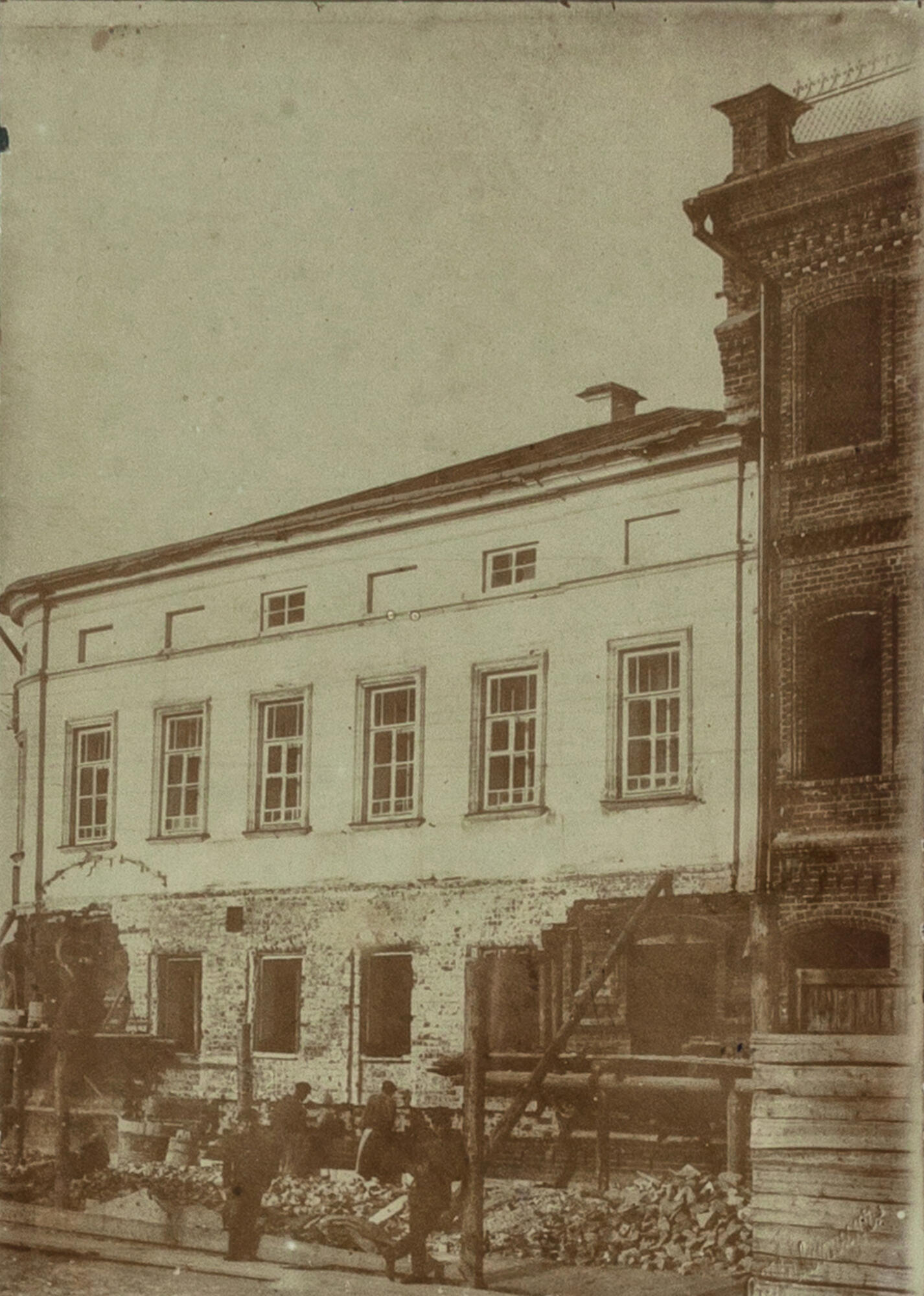In June 1880, a Simbirsk merchant Karl Yurgens purchased the house where Ivan Goncharov was born. Since 1855, Yurgens had a shop in Simbirsk (now Ulyanovsk), and his wife was in charge of it. The shop primarily sold books and sheet music, however, it was not considered a single-line store, for it had other goods too.
In the 1870s and 1880s, Yurgens’s business was on the rise, so he was looking for new buildings for his stores. The former Goncharov house was among those he bought. However, Yurgens could not use it for business because the arrangement of its second floor did not allow for trading spaces. That is what led him to build an adjacent one-story building. Yurgens intended the entrance from the street to three spacious salesrooms. But unfortunately, the project, which started in 1918, was stalled.
When Karl Yungens died in 1898, his four sons took over the business. The older one, Axel, was involved in his father’s affairs from the early 1890s by buying out neighboring buildings and building a farm equipment storage. From 1898 to 1900, Axel supervised the full remodeling of the Goncharov house: the walls were faced with new brick, and the building itself was raised by one story and expanded with side extensions. The house looked to three streets — Moskovskaya, Bolshaya Saratovskaya, and Troitskaya.
On December 2, 1911, the Yurgenses sold the house to another Simbirsk merchant Alexey Balakirshikov. Six months later, the first floor was modified and accommodated a few separate stores. The Balakirshikov family, however, did not live in the house.
After the Russian Revolution, the Goncharov house became a government-owned property. Over the years, it housed a university, a print house, a school, and at one point probably polytechnic courses. This very building had 12 apartments with 36 people. In the 1930s, soldiers were allocated there with their families. Also, the building housed an evening secondary school No. 1 until 2007. In 1982, the first floor became occupied by the Goncharov History and Literature Museum. Since 2012, the entire building of the Goncharovs’ house has been occupied by the only Ivan Goncharov Memorial Center and Museum in Russia.
In the 1870s and 1880s, Yurgens’s business was on the rise, so he was looking for new buildings for his stores. The former Goncharov house was among those he bought. However, Yurgens could not use it for business because the arrangement of its second floor did not allow for trading spaces. That is what led him to build an adjacent one-story building. Yurgens intended the entrance from the street to three spacious salesrooms. But unfortunately, the project, which started in 1918, was stalled.
When Karl Yungens died in 1898, his four sons took over the business. The older one, Axel, was involved in his father’s affairs from the early 1890s by buying out neighboring buildings and building a farm equipment storage. From 1898 to 1900, Axel supervised the full remodeling of the Goncharov house: the walls were faced with new brick, and the building itself was raised by one story and expanded with side extensions. The house looked to three streets — Moskovskaya, Bolshaya Saratovskaya, and Troitskaya.
On December 2, 1911, the Yurgenses sold the house to another Simbirsk merchant Alexey Balakirshikov. Six months later, the first floor was modified and accommodated a few separate stores. The Balakirshikov family, however, did not live in the house.
After the Russian Revolution, the Goncharov house became a government-owned property. Over the years, it housed a university, a print house, a school, and at one point probably polytechnic courses. This very building had 12 apartments with 36 people. In the 1930s, soldiers were allocated there with their families. Also, the building housed an evening secondary school No. 1 until 2007. In 1982, the first floor became occupied by the Goncharov History and Literature Museum. Since 2012, the entire building of the Goncharovs’ house has been occupied by the only Ivan Goncharov Memorial Center and Museum in Russia.



